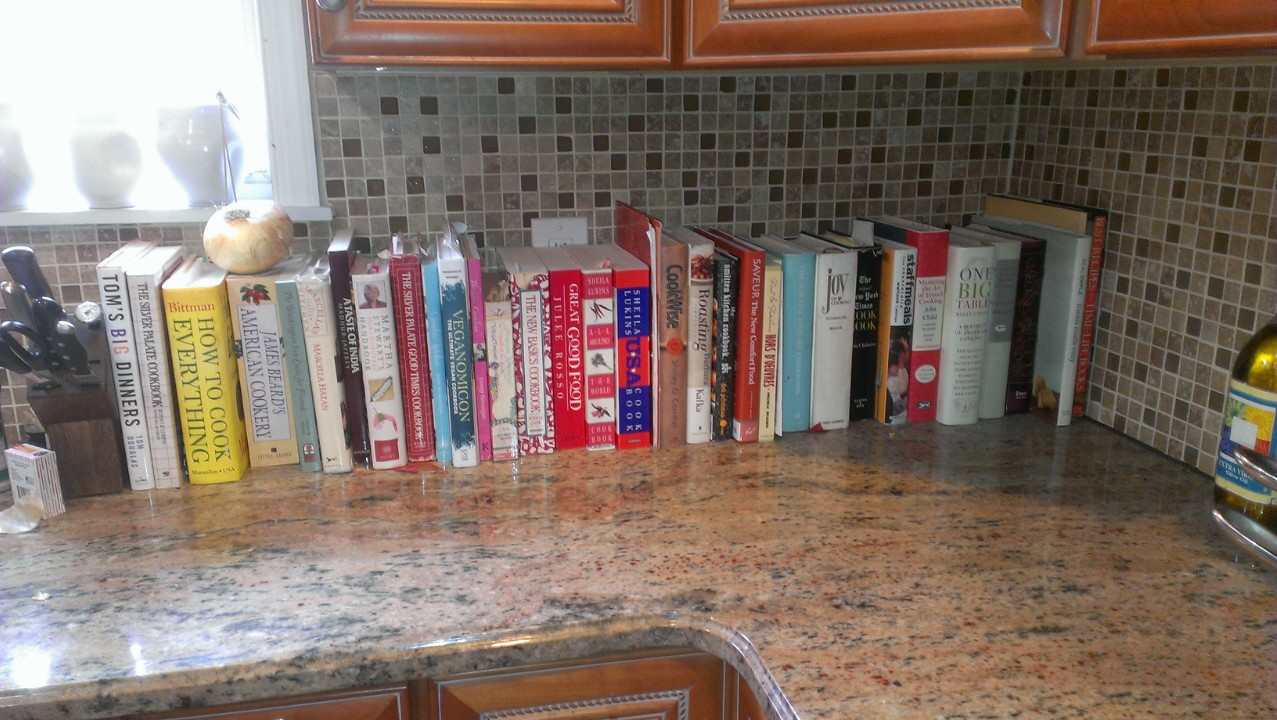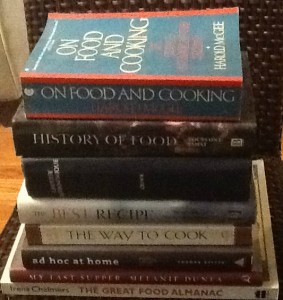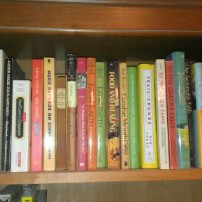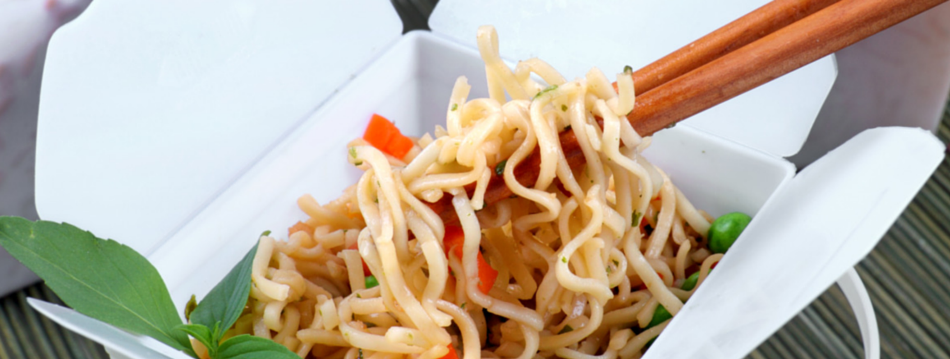
Gastronomy 101 was the first class I encountered when I got to culinary school. We started out in the classroom, much to the dismay of many of my classmates who were impatient young men right out of high school, and eager to start cooking. We had a full six weeks of classes ranging in topics from culinary math to culinary French, and my favorite class was Introduction to Gastronomy. Though I wasn’t new to the notion of reading about food, cooking, and its relationship to history, I was new to the concept of gastronomy as a genre.
I grew up in an era when Gourmet was the only magazine dedicated to food, and Julia Child the only chef on T.V. My family took advantage of nearby ethnic restaurants, and my mom was a rather intrepid cook, once deciding to serve us tripe for dinner (not a big hit) and so I was exposed to all kinds of food. I read her Gourmets, pored over her cookbooks, and relished those ‘exotic’ meals. When I went to college I got my own subscriptions to Gourmet, and the new Cuisine magazine. Things like extra virgin olive oil were starting to make their way to the U.S., I lived in walking distance to the original Dean & DeLuca on Prince St, restaurants as well as home cooks started making ‘fancy food’ that wasn’t French, the culinary world started to explode, and along with many others, I was hooked.

When I get a new cookbook, I can sit and read it like a novel, I go over the ingredients, and the preparation and can almost taste the food. Over the years I have collected all kinds of cookbooks, but also a number of books about food and eating. I loved Laurie Colwin’s Home Cooking books, and of course MFK Fisher, but also books like Laura Esquivel’s Like Water for Chocolate. In our Intro to Gastronomy class we read about osmazomes in the Physiology of Taste written in 1825 by Brilliat-Savarin, and pieces by Harold McGee, Escoffier, Alice Waters and many others, spanning more than two centuries of food writing.
Like studying art history—which I did in college—when you delve into the history of food it’s impossible not to learn about everything else going on in society. Food writing connects us to people in ways that are immediate and intimate. How we eat is who we are. Years from now historians will look at our society and be astonished at our consumption of fast-food, processed food, and the abundance of cheap, empty calories so many people are feed their children because they believe they have no other options… but I digress. Food writing is a reflection of who we are and what is important to us.

If you look up gastronomy under books on Amazon there are over one thousand titles; more than I will ever read, and probably some I’d have no interest in, but still, a daunting number. I still haven’t even read all the books I own, and I keep accumulating more. I love to travel, and eat all kinds of food. I will try almost anything, and if I can’t go in person, I can read about the food somewhere, and get a sense of the people and place. Indigenous foods tell you so much about a region or country. From ingredients to methods of preparation, gastronomy can take me all over the globe and introduce me to the world. I hope my travels both literal and literary never end!
7/23/2013





.jpg)





Gastronomy 101 or Reading about Eating | The Bl... - […] When I got to culinary school we started out in the classroom, much to the dismay of many of my classmates who were impatient young men right out of high school, and eager to start cooking. […]
Deb - Thanks for reminding me of MFK Fisher. I haven’t read her wonderful books in a long enough time that they deserve a revisit.
The Chef's Last DIet - I so agree! In doing this writing I have rediscovered so many great books/authors sitting on my bookshelves.
Deb - Thanks for reminding me of MFK Fisher. I haven’t read her wonderful books in a long enough time that they deserve a revisit.